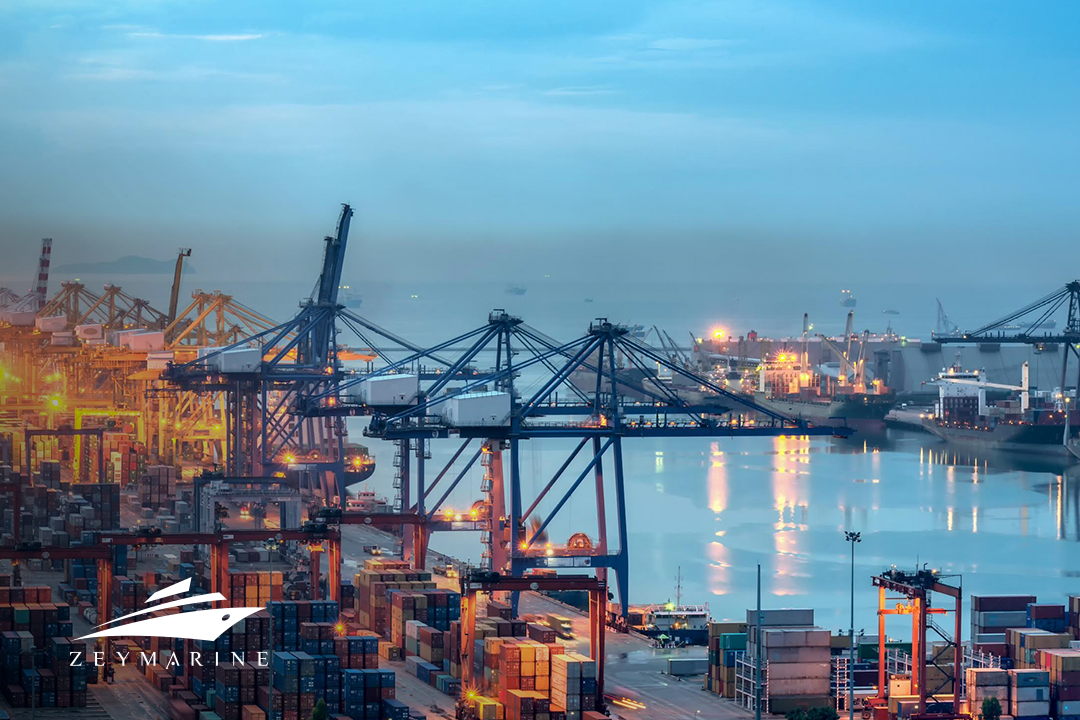Food crises were among the ravages of the Russia-Ukrania War. As so much the more in developing countries, adverse impacts were atrocious. To smother the extent of the food crisis, an agreement was signed in Istanbul on July 22, 2022. Here are the details of the establishment of a humanitarian maritime corridor that allows ships to export and get a grip on the food crises.
Back Story Of The Initiative
According to the Food and Agriculture Organization Corporate Statistical Database, in 2020, Ukraine was listed as the fifth place of countries in wheat exports. Also, with more than 45 million tons of grain exported to the rest of the world, Ukraine has an important place in the global market.
Since the conflict began, there have been multitudinous issues on the important Ukrainian ports that inhibit shipping to the rest of the world. Recent news showed that almost 20 million tonnes of grain were stuck in the Port of Odesa.
The initiative was signed to safe export of foodstuffs and fertilizers, including ammonia, from Ukrainian ports by the Republic of Türkiye, the Russian Federation, Ukraine and the United Nations. The legal foundation of the initiative dates back to 1974, the agreements of the International Convention for the Safety of Life at Sea.
Three ports, Ports of Odesa, Chernomorsk (Chornomorsk) and Yuzhny (Pivdennyi), constitute the subject of the initiative.
General Instructions
– Is an export-only agreement, importing cargo into the Ukrainian Ports is forbidden
– Compulsory to transmit on Automatic Information System (AIS) at all times whilst participating in the Initiative.
– Joint Co-ordination Centre (JCC), consisting of representatives of the three parties and the United Nations, will supervise the operation. The JCC is located in İstanbul and headed by a Turkish admiral. It consists of a total of twenty delegates.
– When vessels arrive at the Turkish Inspection Area, they have to be at Maritime Security (MARSEC) level 3 in compliance
– There will be no attacks of any kind from the Parties to vessels, civilians or ports linked with the initiative
– When a ship sails through the Maritime Humanitarian Corridor, it will be protected by a buffer zone which is a 10-nautical mile circle around the vessel. Buffer zones are not steady, they move alongside the ship. During the operation, no military vessel, aircraft or UAVs can enter the buffer zone.
– The JCC will also provide vessel movement information in the Maritime Humanitarian Corridor to all the Parties. If the military authorities have no objection, the JCC representatives from each Party will acknowledge that all military ships, aircraft and units in the area have been notified and that the vessel can move safely.
– If there will be an alteration on time or date on the operations of approaching the Turkish Inspection Area, JCC will be notified by the Ukrainian authorities.
If you want to learn more, you can view the procedures in detail from the link of the Turkish Shipowners Association.
Recent Developments
On 25 July, Ukrainian Sea Ports Authority (USPA) finalized its preparation for the reinitialization of the export of grain. A few days later, Turkish Presidential Spokesperson İbrahim Kalın announced that the first ship since the conflict began may depart either 1 or 2 August from Ukraine.
On 1 August, expectations did not unreciprocate. The first ship loaded with Ukrainian grain, a Sierra Leone-flagged cargo ship Razoni, departed from the Odesa Port and sailed onward to Lebanon with over 26,500 tons of corn.
Ukraine also added that 17 other vessels were “loaded and waiting permission to leave.”
On 12 August, two more vessels, one from Chornomorsk port and the other from Yuzhny port, carrying over 63,000 tons of grain left Ukraine. The ships are en route to Turkey and Iran.
You can always contact Zeymarine Shipping Agency for further thought about the procedures in the Turkish Straits and the anchorage area where the Commission controls are made for the ships departing from the Ukrainian Ports within the scope of the Black Sea Grain Initiative.







